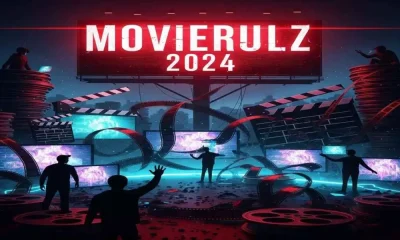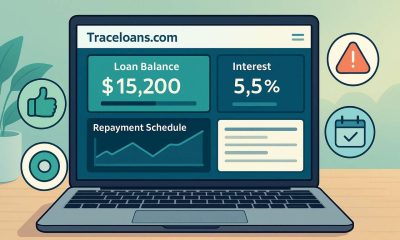Useful Tools
When Influencers Go Wild: The Truth Behind the Craze

Introduction
The digital era has created a new kind of celebrity — the influencer. These social media stars have the power to shape trends, build brands, and inspire millions of followers. But in the race for fame and attention, some influencers have crossed the line, giving rise to what’s known as “Influencers Gone Wild.” This term describes the growing number of content creators who take their online behavior too far — posting shocking, controversial, or even dangerous content just to stay relevant.
From reckless stunts to fake promotions, the influencer world has seen it all. While these acts often bring instant fame and viral views, they also carry serious consequences — from public backlash to legal trouble. In this article, we’ll explore why influencers “go wild,” the dangers behind such behavior, and how audiences, brands, and platforms can create a healthier, more ethical digital environment.
What Does “Influencers Gone Wild” Mean?
The phrase “Influencers Gone Wild” refers to the extreme or irresponsible actions of online influencers who go beyond acceptable behavior in search of attention. These creators often post shocking or inappropriate content that pushes moral, social, or professional boundaries.
Examples include:
-
Risky or dangerous stunts performed for viral fame.
-
Fake giveaways or misleading promotions that exploit followers.
-
Public feuds and drama used to attract engagement.
-
Oversharing private life or exploiting sensitive moments for views.
While such acts might seem harmless or entertaining, they often harm reputations, damage brands, and set a poor example for younger audiences. The influencer landscape is increasingly blurring the line between authenticity and chaos — where “wild” behavior becomes a tool for visibility.
Why Do Influencers Go Wild?
1. The Pressure to Stay Relevant
Social media algorithms reward engagement. The more likes, comments, and shares a post gets, the more visibility it receives. Influencers often feel trapped in a cycle where they must constantly create content that outperforms their last viral post. This pressure can push them toward outrageous or controversial acts.
2. The Allure of Quick Fame
Unlike traditional celebrities, influencers can rise to fame overnight. A shocking video or bold statement can bring instant attention. This “shortcut” to success tempts many creators to take extreme measures just to become trending.
3. Financial Motivation
Money plays a major role. High engagement rates attract sponsorships and brand deals. To maintain income, influencers sometimes resort to sensationalism, fake stories, or manipulative content that grabs quick attention.
4. Lack of Accountability
Influencers operate without formal regulation. There’s no governing body to monitor their actions. This freedom often leads to poor decisions, especially when creators prioritize popularity over professionalism.
5. Audience Demand
Ironically, followers also contribute to this trend. Audiences often reward shocking or controversial posts with views and comments, reinforcing the idea that chaos sells.
Famous Cases of “Influencers Gone Wild”
The Festival Disaster
One of the most infamous examples was a luxury music event promoted by influencers that turned out to be a complete scam. The event promised glamour and exclusivity but ended in chaos. Influencers who promoted it without proper research faced heavy criticism and lawsuits, proving that blind endorsements can backfire.
The Controversial Video Incident
A famous YouTuber once posted a highly insensitive video showing a tragic scene that shocked viewers. The backlash was massive — sponsors withdrew support, the channel lost millions in revenue, and the influencer had to publicly apologize. This case showed that “shock value” can destroy credibility overnight.
The Charity Scandal
A top fashion influencer once promoted a charity product, claiming that proceeds would help hospitals. Later, it was revealed that most of the funds never reached the cause. The influencer was fined heavily and lost trust from her audience. It was a wake-up call for the industry about honesty and responsibility.
Dangerous Challenges
From eating detergent pods to jumping off moving vehicles, social media challenges have encouraged reckless behavior among influencers and followers alike. Such trends highlight how online validation can override common sense.
The Consequences of Going Wild
1. Reputation Damage
Once an influencer loses credibility, it’s almost impossible to rebuild. Audiences today value authenticity, and one mistake can end years of hard work.
2. Loss of Income
Brands quickly distance themselves from controversy. A single scandal can cause a massive drop in sponsorships, ad revenue, and collaborations.
3. Mental Health Struggles
Constant public scrutiny, criticism, and guilt after a backlash can deeply affect an influencer’s mental well-being. Many admit to feeling anxious, burnt out, or depressed after going too far.
4. Legal Trouble
False claims, scams, and dangerous behavior can result in lawsuits or fines. Several countries have started enforcing laws that regulate influencer marketing and online conduct.
5. Audience Distrust
Viewers are becoming more skeptical of influencer content. Repeated scandals make followers question whether their favorite creators are genuine or simply chasing fame.
The Role of Brands and Platforms
Brands
Companies have learned that partnering with “wild” influencers can be a huge risk. Many now perform background checks and include morality clauses in contracts. A single mistake can tarnish not just the influencer but also the brand image.
Social Media Platforms
Platforms like YouTube, Instagram, and TikTok are tightening content rules. They demonetize harmful videos, restrict dangerous challenges, and suspend repeat offenders. This shift shows a growing effort to promote responsibility.
Audiences
Viewers play a powerful role. By unfollowing toxic creators and supporting ethical influencers, audiences can reshape the social media ecosystem. Every like, comment, or share sends a message about what kind of content is acceptable.
How Influencers Can Avoid Going Wild
1. Prioritize Authenticity
Staying true to one’s values builds long-term loyalty. Followers appreciate realness over perfection or shock.
2. Fact-Check Everything
Before promoting any brand, product, or cause, influencers should verify details. A few minutes of research can prevent future embarrassment.
3. Maintain Healthy Boundaries
Not every moment of life belongs online. Keeping private matters private helps preserve mental stability and credibility.
4. Collaborate Responsibly
Influencers should choose partnerships that align with their image and values. Authentic collaborations lead to trust — fake ones lead to fallout.
5. Seek Professional Guidance
As influencer marketing grows, consulting legal or PR professionals can protect creators from potential risks.
The Future of Influencer Culture
The influencer industry is maturing. While scandals still occur, there’s a noticeable shift toward ethical and transparent content creation. Audiences are more informed, and brands demand accountability. Future success will depend less on wild antics and more on trust, value, and genuine influence.
Emerging regulations are also shaping the future. Governments are introducing laws to ensure honest advertising, protect consumers, and penalize deceptive behavior. Influencers who adapt early to these ethical standards will stand out as leaders rather than followers of chaos.
Social media platforms are evolving too. Algorithms are slowly shifting toward promoting meaningful engagement instead of pure sensationalism. This evolution could mark the end of the “gone wild” era — replacing controversy with creativity.
Read More: TraceLoans.com Review 2025 – Legit Loan Platform or Risky Website?
Conclusion
The rise of “Influencers Gone Wild” shows both the power and the danger of modern fame. In a world where clicks and likes define success, some creators lose sight of responsibility and integrity. Yet, this phase also marks a turning point for digital culture. The backlash against wild behavior is a sign that audiences value authenticity, not drama.
For influencers, the message is clear: real influence comes from trust, not chaos. For brands and platforms, it’s about promoting accountability and setting higher standards. And for audiences, it’s about supporting those who use their voice wisely. Social media doesn’t have to be a circus — it can be a space for genuine connection, creativity, and growth when creators remember the true meaning of influence.
FAQs
1. What does “Influencers Gone Wild” mean?
It refers to influencers who behave irresponsibly online, posting shocking or controversial content to attract views and followers.
2. Why do influencers act out or go wild?
They do it to gain quick attention, satisfy algorithm pressure, or keep up with viral trends — often without thinking of long-term damage.
3. Can influencers face consequences for wild behavior?
Yes. They can lose followers, sponsors, credibility, and even face legal or financial repercussions for unethical actions.
4. How can influencers prevent scandals?
By staying authentic, verifying facts, setting personal boundaries, and being transparent about promotions or partnerships.
5. What can audiences do to promote healthy influencer culture?
Support creators who share positive, honest content and avoid engaging with those who rely on shock or negativity for attention.
-

 Interview Preps5 months ago
Interview Preps5 months agoWhy Should We Hire You As A Teacher? Practical Answers
-

 Interview Preps5 months ago
Interview Preps5 months agoTop 35 Must Know Greggs Interview Questions & Expert Answers!
-

 Articles1 year ago
Articles1 year agoWhich Skills Are Needed To Work In The Nursery?
-

 Interview Preps4 months ago
Interview Preps4 months agoThe Most Common Questions For Aldi Video Interview
-

 Interview Preps5 months ago
Interview Preps5 months ago10 Most Common Competency Based Interview Questions





















































































































































